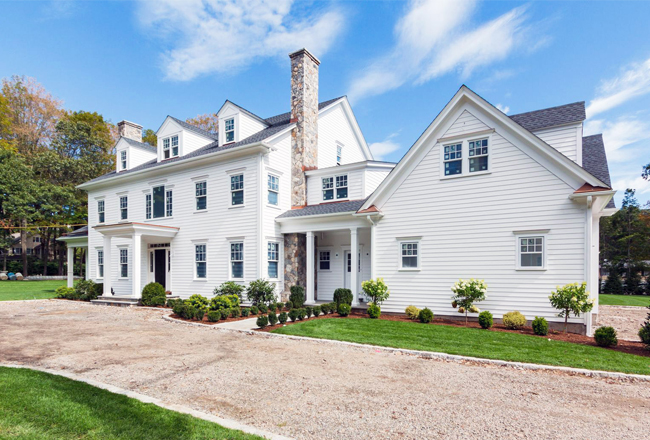
For most seniors the one asset which they are most concerned about losing to the cost of long-term care is their home (primary residence). During the course of an initial consult the client regularly says, “I don”™t want them to take my house.” To which my response is always that Medicaid doesn”™t physically evict you from your home and take it, but that they could have a claim/lien against your home for the value of the services they have provided to you.
Fortunately, there are options available to the client to protect their home, some of which are much better than others, for tax and Medicaid eligibility reasons.
The following is a summary of the available options:
- Outright transfer without the reservation of a Life Estate to the homeowner.
Perhaps the least desirable option, as the person receiving the home receives it at its original purchase price, plus capital improvements. Thus, if the house was purchased for $80,000, and $50,000 of capital improvements were made to it, the person receiving the home would have a cost basis for, capital gains purposes, of $130,000. If the recipient(s) were to sell the home for more than $130,000, and the recipient(s) did not own and reside in the home prior to its sale for at least two out of five years (are not eligible for the personal residence exclusion), the sale would be subject to capital gains taxes. This is an undesirable result, especially if the home was purchased decades ago at a low cost basis, which is often the case in the New York Metropolitan area and its suburbs. This outright transfer is also a completed gift requiring the filing of a gift tax return and the utilization of part of one”™s lifetime estate and gift tax exemption. Additionally, the outright transfer of the home, unless it is to a spouse, disabled child, caretaker child or sibling with an equity interest, will also create a five (5) year look back for Medicaid Nursing Home eligibility, and as of October 1, 2020, a 30 month look back period for Medicaid Home Care.
- Deed of home with the reservation of a life estate (the right to reside in the home and the obligation to pay its expenses.
This transfer of the home also creates the look back periods for Medicaid as stated above, however, if the house is not sold during the lifetime of the person(s) transferring the home; the recipient will receive the value of the home at its fair market value on the date of death of the individual(s) transferring the home; Under Section 2036(a) of the Internal Revenue Code (IRC) the retention of a life estate results in the property being included in the estate of the transferor for estate tax purposes at its fair market value on date of death. The recipient of the remainder interest receives a step up in the cost basis of the home to its fair market value on the date of death of the life estate holder.
However, this form of conveyance may be problematic if the home is sold during the lifetime of the transferor. A sale during the lifetime of the transferor will result in a loss of the step up in cost basis, thus, subjecting the recipient of the home to a potential capital gains tax if they do not reside in the home and are not eligible to receive the personal residence exclusion for capital gains tax purposes. Additionally, if the home is sold during the life of the person holding the life estate, pursuant to the rules for Medicaid eligibility, they are entitled to receive a portion of the proceed of sale based on the actuarial value of their life estate as it relates to the sale price of the home. This will either result in their receipt of a portion of the sale proceeds which, depending on the amount, may disqualify them for Medicaid. Alternatively, if they decide not to receive said portion of the sales proceeds they are considered to have made a gift, thus, creating a new look back period for Medicaid eligibility. In essence, they are defeating the original purpose for which they made the transfer, which was to protect their equity in the home for purposes of long-term care.
- Transfer to an Irrevocable Medicaid Asset Protection Trust (MAPT)
Because of both its tax advantages and the fact that it creates a look back period for Nursing Home and Home Care Medicaid, in virtually all cases with the exception of where the transfer can be made without any look back period (see above), utilizing a MAPT is the most logical option. The MAPT for tax purposes is what is known as a ”˜defective grantor trust,”™ the creator of the trust is considered as the owner of the assets in the trust from an income tax (including capital gains tax) perspective. Thus, if the home is sold by the trust during the lifetime of the creator/grantor, the creator/grantor will be entitled to utilize their personal residence exclusion ($500,000 if married and $250,000 if single). Additionally, the creator/grantor of the MAPT is entitled to any real property tax exemptions they are eligible for (STAR, Veterans, Senior Citizens, etc.) during their lifetime, and is obligated to pay all the expenses for the maintenance and upkeep of the property. Upon the death of the creator/grantor of the MAPT, the home is then includable in the taxable estate of the creator/grantor”™s at its fair market value on date of death. Thus, the trust beneficiaries will receive the property with a ”˜stepped up”™ cost basis. The transfer of the home to the MAPT also creates the look back periods for Medicaid, and the assets transferred to MAPT will pass to the beneficiaries outside of probate. The MAPT provides both asset protection benefits, tax benefits and avoidance of probate.
- Transfer to a Revocable Living Trust (RLT)
RLT provides all the tax advantages of the MAPT, however, the transfer to a RLT does not create a look back period for Medicaid eligibility. Thus, there exists the possibility that Medicaid can impose a claim/lien against the trust assets for the value of services provided.
In conclusion, the MAPT has been and continues to remain the best choice for those willing and able to engage in Medicaid Asset Protection Planning.
_________________________________
*Anthony J. Enea is a member of Enea, Scanlan and Sirignano, LLP of White Plains, New York. He focuses his practice on Wills, Trusts and Estates and Elder Law. Mr. Enea is the Past Chair of Elder Law and Special Needs Section of the New York State Bar Association (NYSBA). He is the current Chair of the Senior Lawyer Section of the NYSBA. Mr. Enea is the Past President and Founding member of the New York Chapter of the National Academy of Elder Law Attorneys (NAELA). Mr. Enea is the President of the Westchester County Bar Foundation and a Past President of the Westchester County Bar Association. Mr. Enea can be reached at (914) 948-1500 or at a.enea@esslawfirm.com.





















